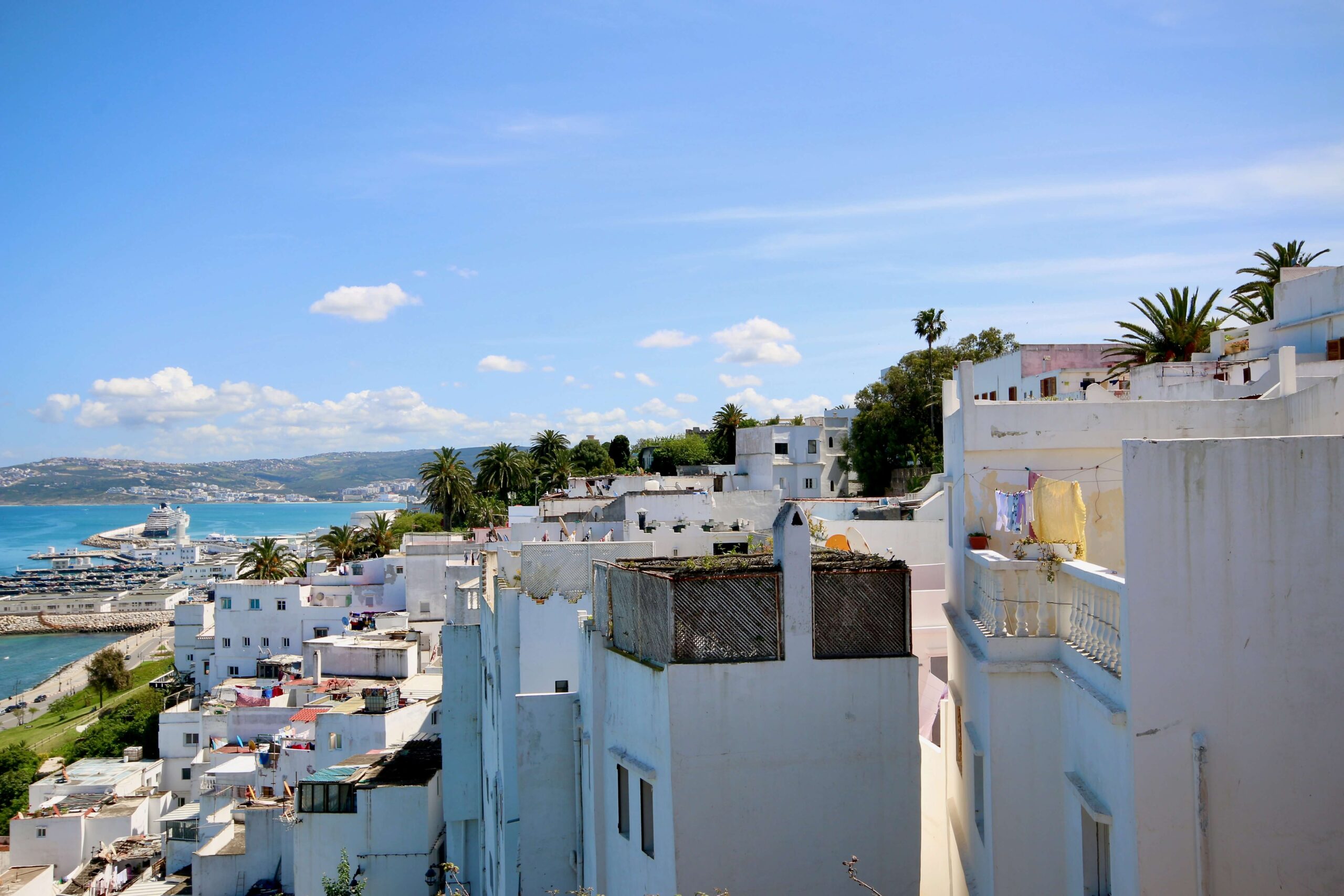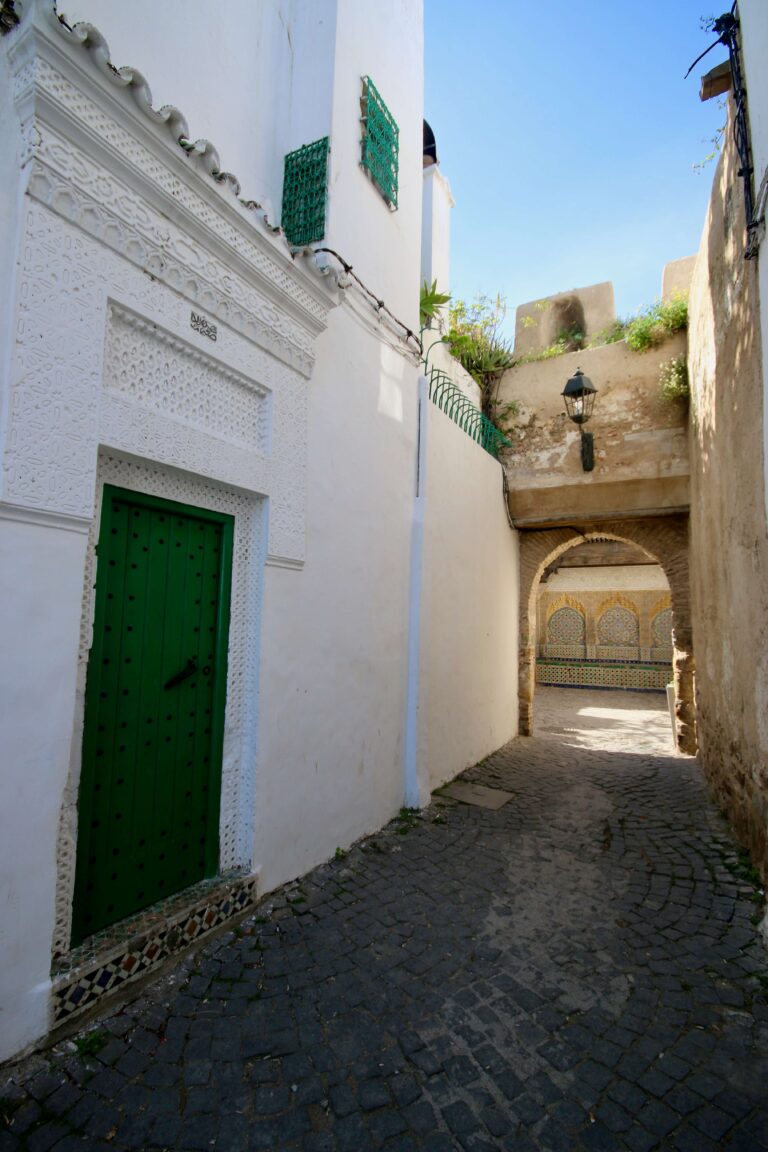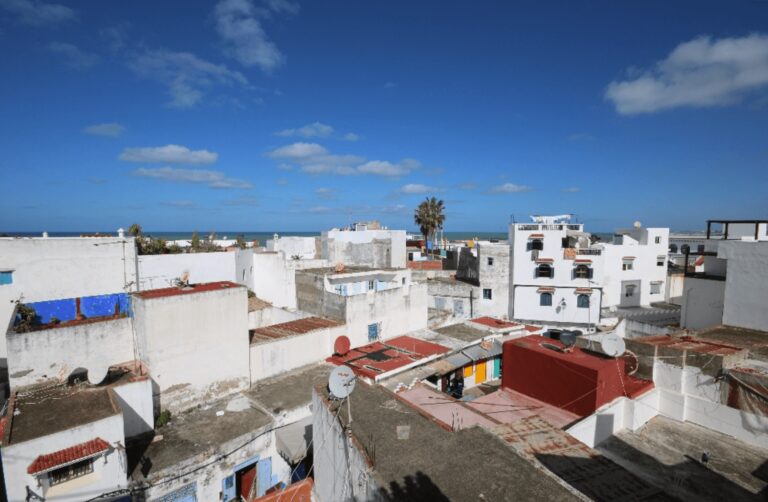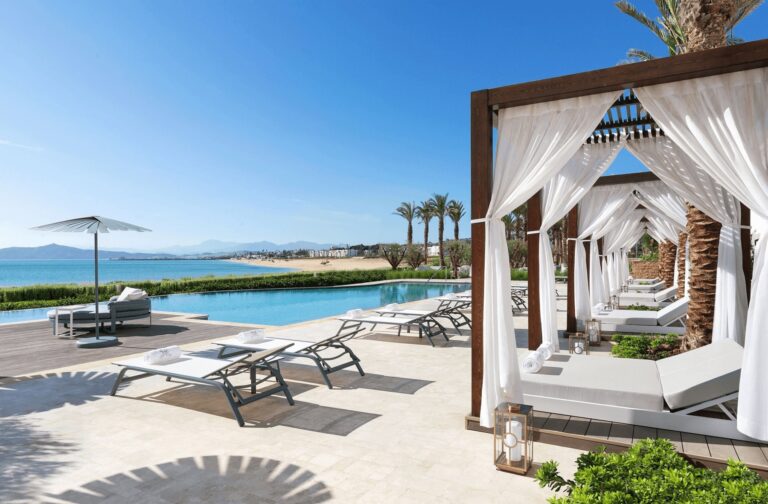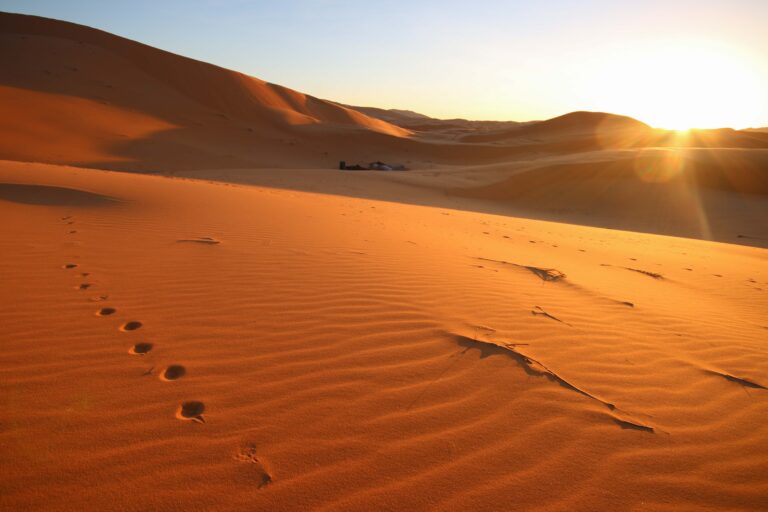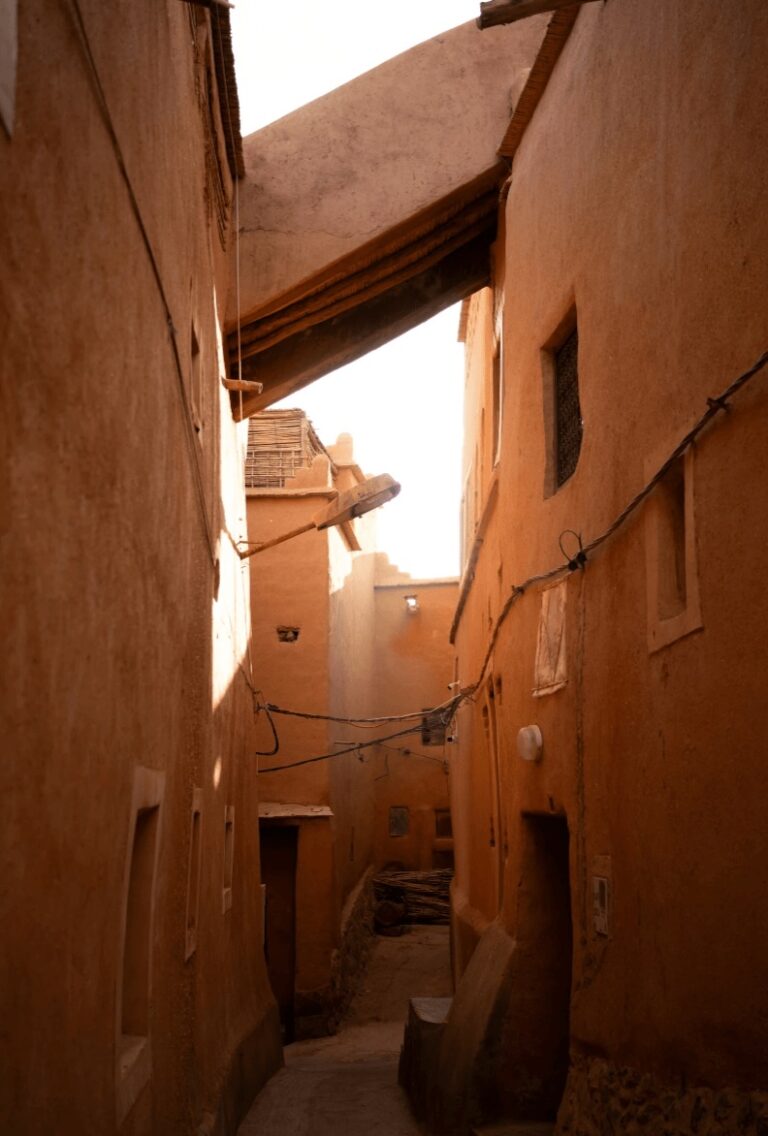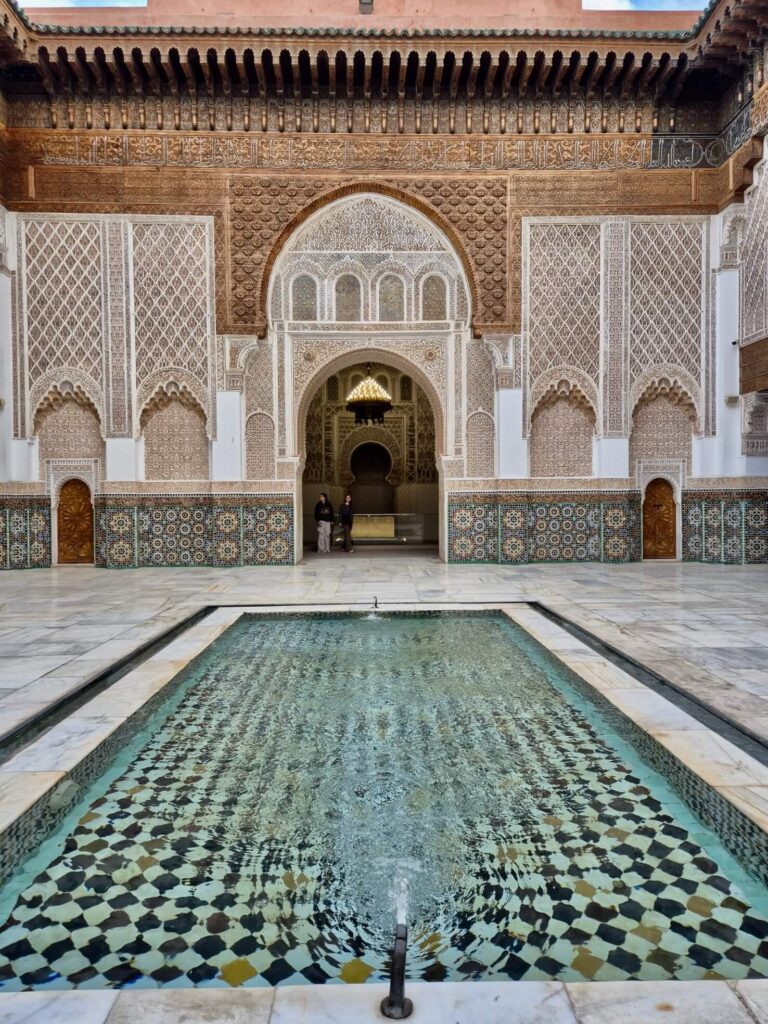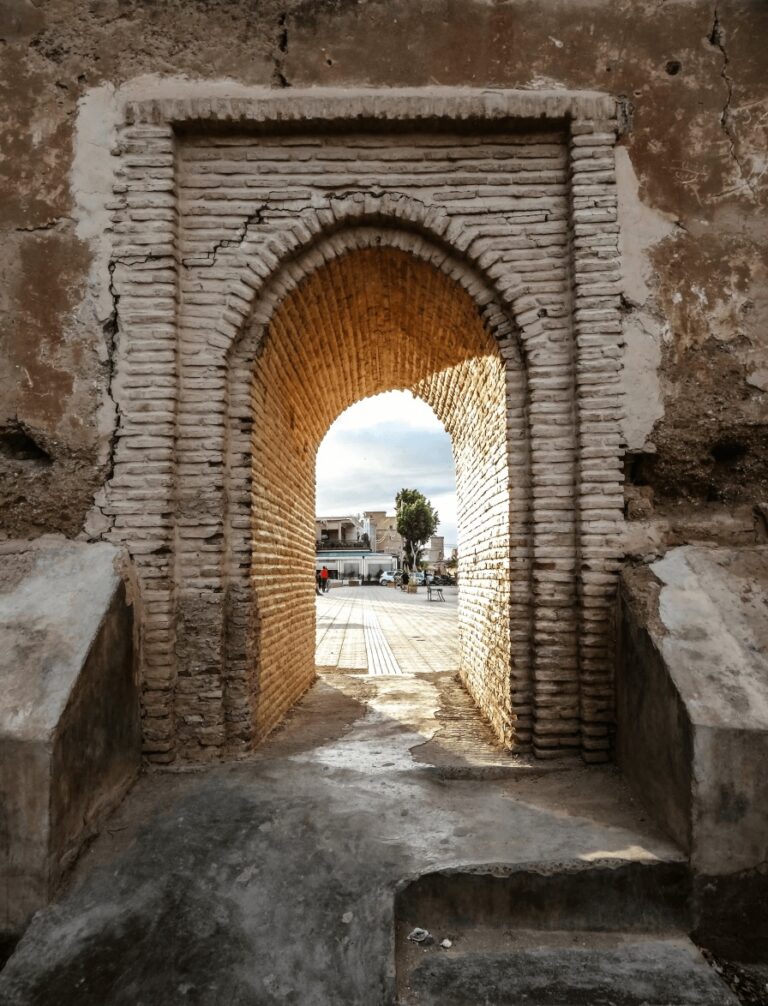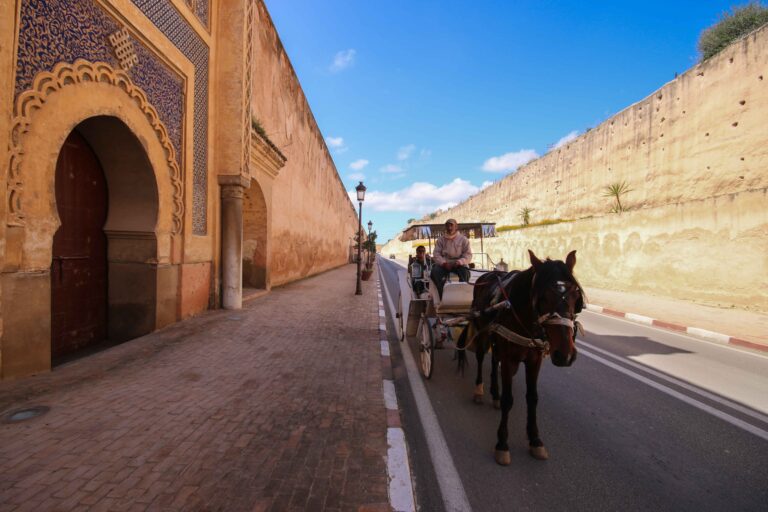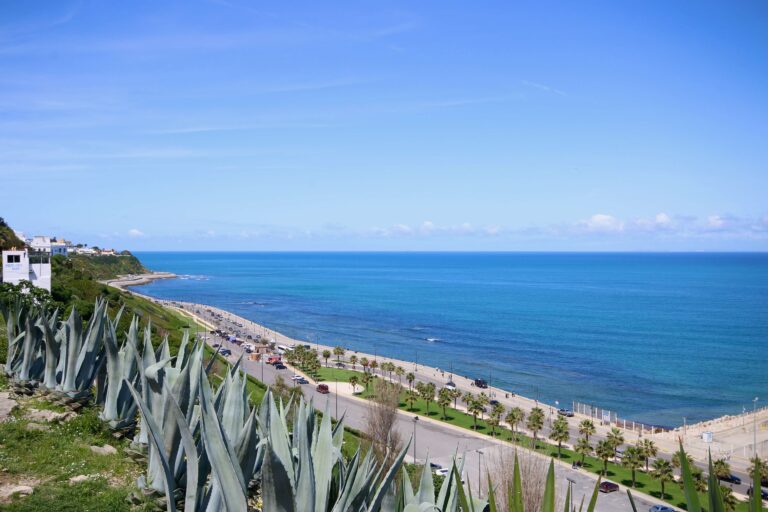Is Tangier Worth Visiting? 8 Reasons Why I Would Return
Travelling to northern Morocco? Discover 8 reasons why Tangier is worth visiting and worth adding to your Morocco itinerary.
If I’m being honest, Tangier is a city that has grown on me over time. Eeach time I visit, I find something else to love. There are fascinating museums, the coastal views are spectacular and the street art is incredible.
Plus, I love the people-watching in the squares and I had one of the most unexpectedly amazing meals of my Moroccan travels here. Tangier just has that “something” that I can’t really put my finger on.
That being said, I hear mixed things from other travellers about Tangier – some love it, some don’t. For some reason, Tangier doesn’t have that “you have to visit” reputation of places like Marrakech and Fes.
So you might be wondering is Tangier worth visiting or should you add Tangier to your Morocco itinerary?
As I don’t know your personal travel style or interests, it’s hard to give a definitive answer…and I’m not going to try. Instead, I’ll share with you some of the reasons I think Tangier is worth visiting. You can decide whether they resonate with you.
As a broad generalisation, I’d say that if you’re interested in the Beat Generation and you like bustling coastal cities with great museums and street art, then there’s a good chance you’ll like Tangier.
Plus, it’s on the doorstep of some other wonderful destinations. Places such as Asilah and Chefchaouen can easily be visited as day trips.
In response to the question “Is Tangier worth visiting?”, here are 8 reasons why I think it is. Hopefully, this article will help you to make an informed decision as to whether it’s a destination you want to add to your Morocco itinerary.
For more info about visiting Tangier, check out my Essential Travel Guide to Tangier.
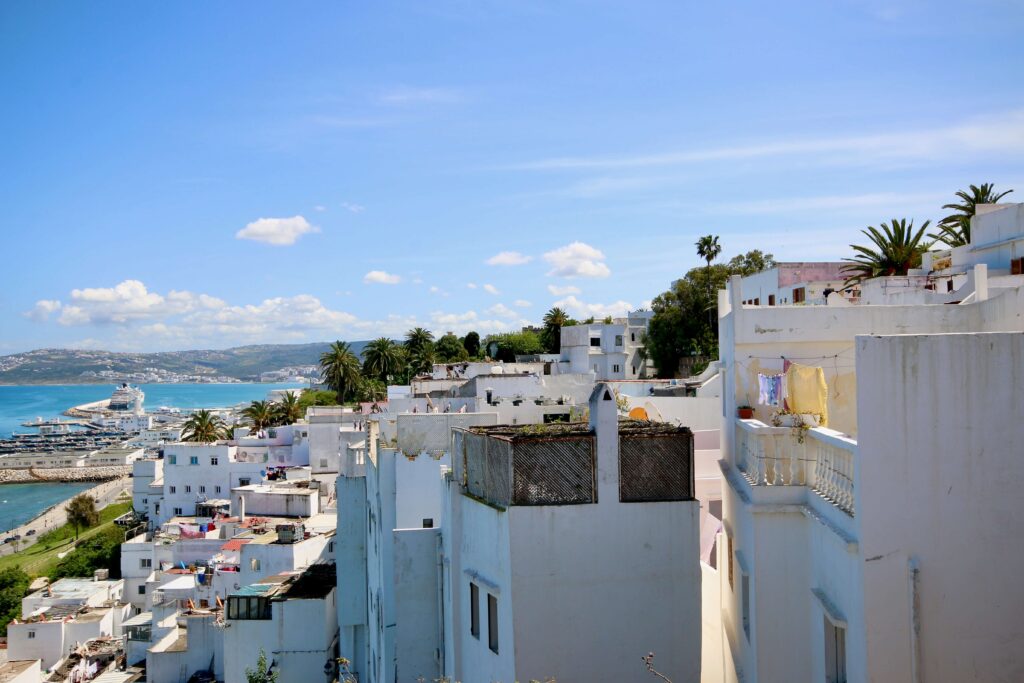
Disclosure: This article contains affiliate links, meaning I earn a small commission when you make a purchase. Affiliate links cost you nothing and ensure my content stays free!
8 reasons why I think Tangier is worth visiting (and why I’d return again)
It feels different from other Moroccan cities
Just an hour’s ferry ride from Spain, Tangier is an artistic city that sits at the northern tip of Morocco, where European and African cultures collide. It has a storied literary past and the enchanting architecture in its ancient Kasbah district has attracted travellers for centuries, including me!
For me, a lot of Tangier’s appeal lies in the fact that it feels quite different from other Moroccan cities. I think that’s largely due to its geography. The Kasbah district tumbles down a hillside overlooking the port and there are incredible views across the coastline (and Tangier’s modern port) from its lookout points.
Its whitewashed streets are adorned with magnificent doors and some incredible street art, including (my favourite) the electricity boxes painted by Punksy.
Once you venture beyond Tangier’s medina, the city has more of a European flavour in its architecture. There are some grand residences perched atop the coastline that leads west to Plage Merkala.
Leafy parks are scattered throughout the city, which also adds to its charm. Plus, there are some iconic squares where you can sit on a bench and shoot the breeze with older locals.
If you’re a foodie visiting Tangier, check out my top recommended food tours and experiences here.

There are some fantastic museums
As you would expect of an artistic city, Tangier has some fantastic museums. They cover everything from ancient cultures to contemporary art and Morocco’s relationship with the United States.
I particularly love the Kasbah Museum of Mediterranean Cultures. It occupies historic Dar El Makhzen and features replicas of ancient maps and artefacts that have been traded throughout the region.
Next door is the Museum of Contemporary Art, which presents rotating temporary exhibits from international creatives. The last time I was there, it was an exhibition highlighting Cuban artists.
Top tip
Tickets to the Kasbah Museum of Mediterranean Cultures include entrance to the Museum of Contemporary Art, so allow yourself time to visit both.
Art enthusiasts also shouldn’t miss Dar Niaba, a gorgeous, whitewashed building centred around a fountain courtyard. This Portuguese-era mansion details the diplomatic history of Tangier, as well as boasting an outstanding collection of portraits of Moroccans painted by foreign artists.
Americans (in particular) may be interested in the American Legation Museum. It explores how Morocco was the first country to officially recognise the United States.
If you’re a traveller who takes inspiration from the adventures of others, then the Ibn Battouta Museum is a “must”. It details the life of the legendary Moroccan explorer across Africa, Europe and Asia.
For more info about Tangier’s best museums, including opening times and entrance costs, check out my detailed article here.
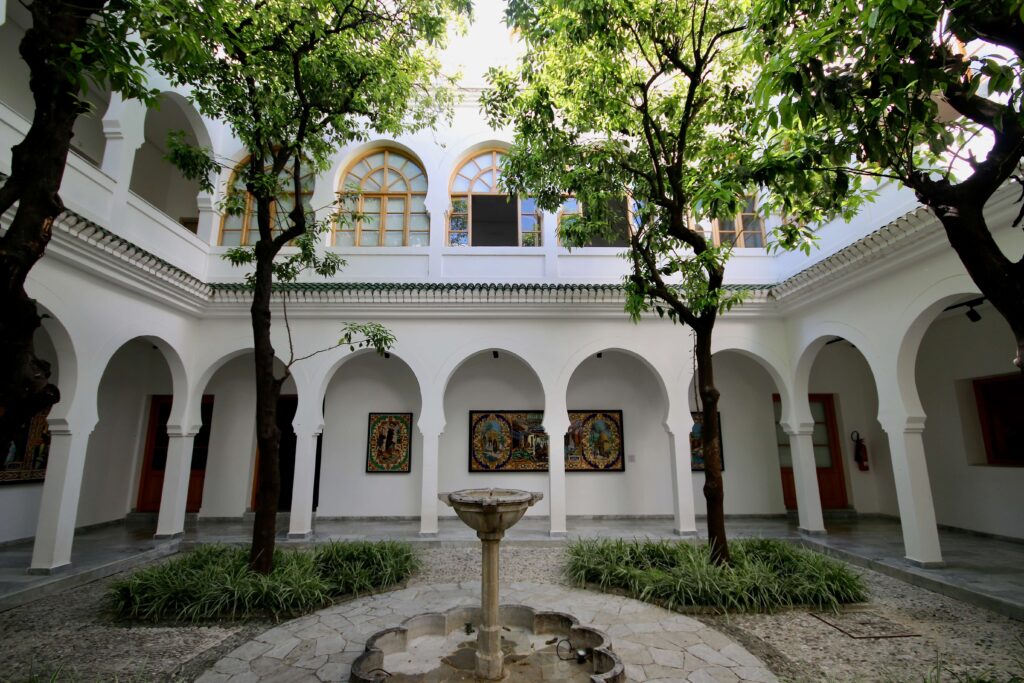
It has a legendary literary history
In the early to mid-20th century, Tangier drew in a host of literary giants. Most were attracted by its sun-drenched coastal setting and the “exotic” feel of its whitewashed medina.
Luminaries like Mark Twain, Jack Kerouac and Tennessee Williams were captivated by the city’s charms. In Tangier, they found the perfect backdrop to pen their masterpieces.
Twain incorporated his experiences in Tangier into his travelogue “The Innocents Abroad”. Meanwhile, Kerouac worked on his novel “Desolation Angels” during his time in the city.
Tennessee Williams was so enamoured with Tangier that he made it his part-time home for several years and William S. Burroughs penned “Naked Lunch” in the city.
As someone who loves books (particularly novels and the escape they offer), there is great appeal in being able to see what drew so many authors to Tangier. If you feel the same, I’d suggest visiting the Librairie des Colonnes, a famous bookshop that Paul Bowles once used as his mailbox.
You can also relax at some of the cafes where these legendary authors once sipped mint tea, debated ideas and scribbled in their notebooks.
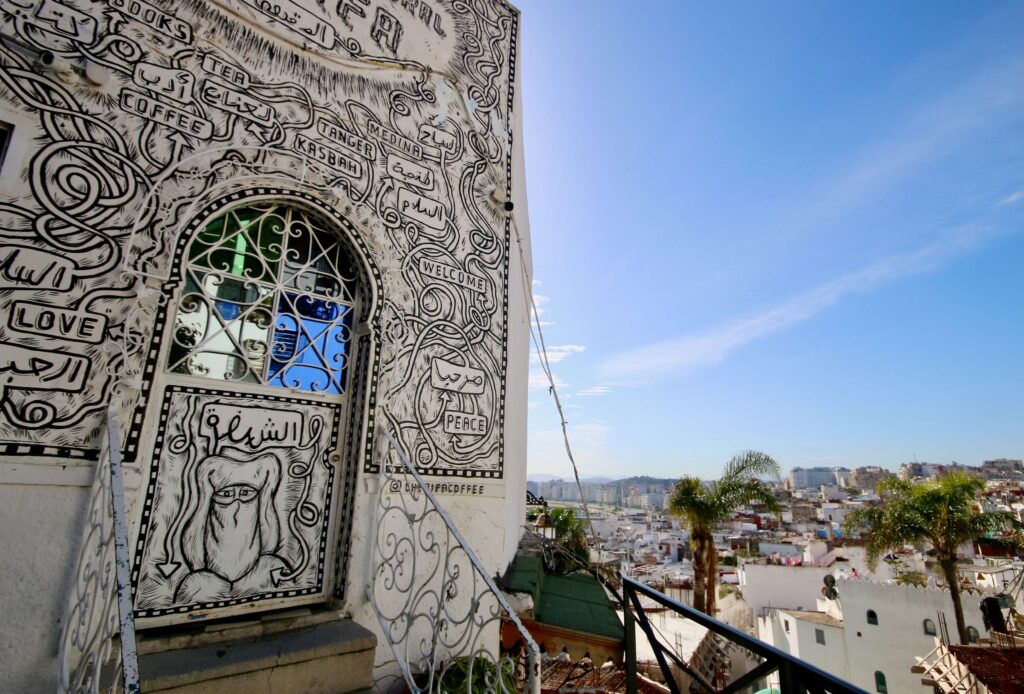
The sunsets are sublime (and sociable)
One of my favourite experiences in Tangier is watching the sunset from the lookout point at Bab Al Bahr. It’s at the northern tip of the Kasbah district.
As the sun sinks towards the horizon, tourists and locals alike gather to sip tea at the clifftop cafes and watch nature put on this incredible show, transforming the sky above the Strait of Gibraltar.
Not only is it set against the historic backdrop of the Kasbah and overlooking Tangier’s modern port but it has a wonderful social atmosphere. Last time I was there, the terrace at Bab Al Bahr was filled with local families and groups of friends (both young and old), taking selfies and just enjoying the moment.
It’s worth noting that this location isn’t facing directly west. So depending on where the sun is setting, you may only see the afterglow.
For a more guaranteed sunset spot, head to Cap Spartel. At this beautiful nature reserve, the waves of the Atlantic Ocean and Mediterranean Sea converge under the watchful eye of a lighthouse. It’s a stunning location to enjoy the sunset over the water and the Cap Spartel Lighthouse adds to the charm.
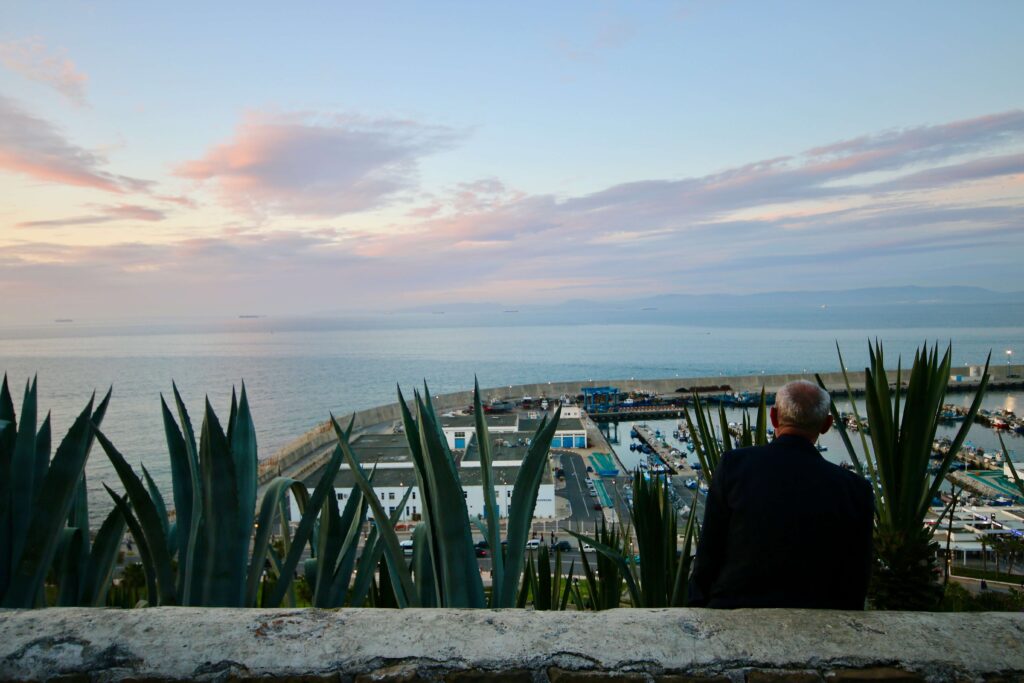
It offers some of the best day trips in Morocco
From Tangier, it’s super easy to explore northern Morocco. Within a few hours, you can be in the UNESCO-listed medina of Tetouan, the coastal town of Asilah or wandering the blue-hued streets of Chefchaouen.
These are all destinations in their own right and worthy of an overnight visit. But if time doesn’t allow (or you can’t be bothered hauling your luggage around), they can easily be visited on day trips from Tangier.
Asilah
Established by the Phoenicians around 1500 BC, Asilah is a lively seaside treasure surrounded by 15th-century Portuguese walls. On a day trip from Tangier, you’ll have time to stroll through the cobblestone alleys of its whitewashed medina, which is home to colourful murals and art galleries, as well as watch sunset from the ramparts.
Asilah is 45 minutes’ drive from Tangier.
To learn more about visiting Asilah, check out my Essential Travel Guide to Asilah.
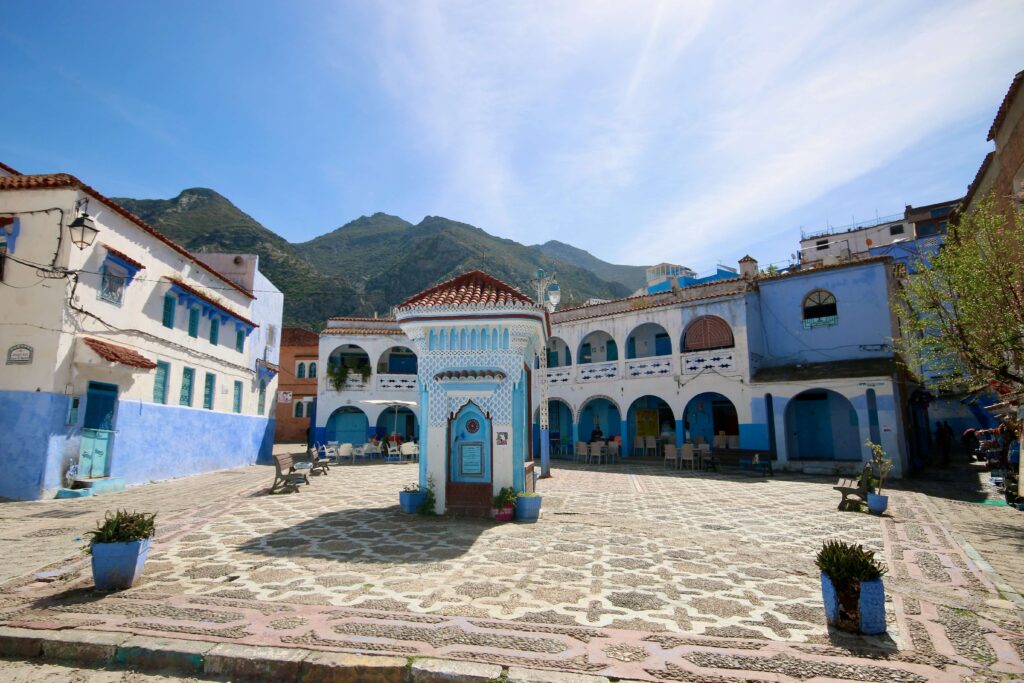
Tetouan
With origins that date back to the 3rd century BC, Tetouan began life as an ancient Amazigh town. It was revived in the 15th century with the arrival of Andalusian refugees fleeing the fall of Granada.
Today, it is notable for the Andalusian-style architecture of its medina, which features beautiful arches, detailed tilework and intricately carved wooden doors.
Tetouan is a one-hour drive from Tangier.
To learn more about visiting Tetouan, check out my Essential Travel Guide to Tetouan.
Chefchaouen
Chefchaouen almost needs no introduction, with this Rif Mountains town becoming Insta-famous due to its blue and white buildings. It’s an enchanting spot to wander, with incredible photo opportunities around every corner. Plus, there’s a wonderful square (Plaza Uta el Hammam) where you can watch the world go by.
Chefchaouen is a two-hour drive from Tangier.
For more info about visiting Chefchaouen, check out my Essential Travel Guide to Chefchaouen.
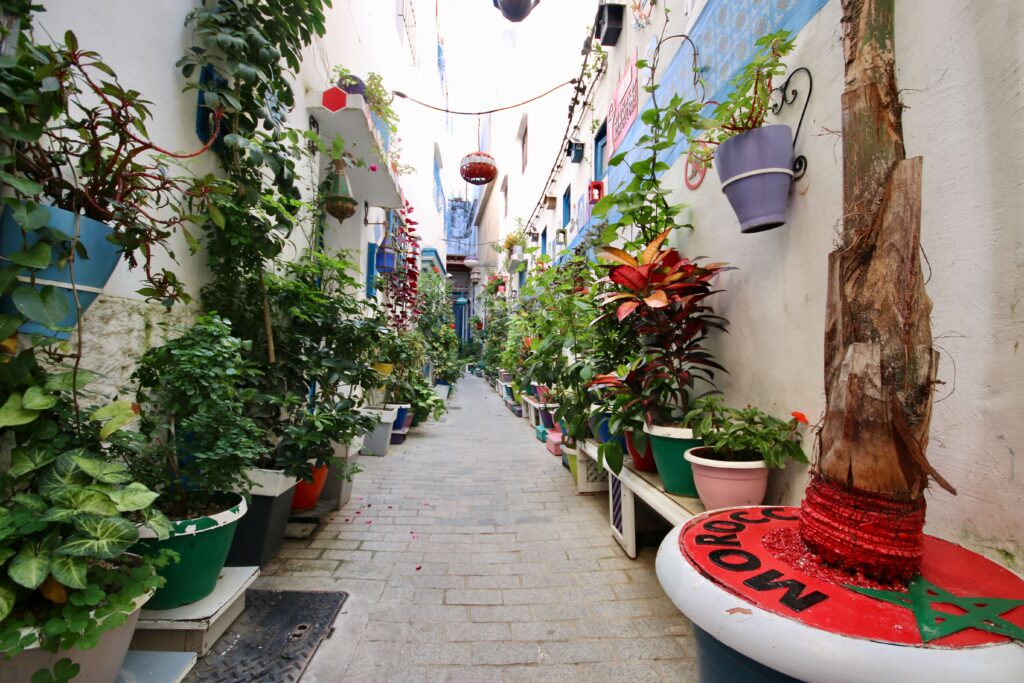
It feels safe as a solo female traveller
Is Tangier safe? The answer depends on who you ask, as everyone’s experience will be unique. Based on my experience as a solo traveller in Morocco, I found the city to be really safe. I’ve never encountered any threatening situations there.
Yes, there are stall owners trying to get your attention and “guides” approaching you unsolicited. But this is common in many Moroccan cities.
On my last visit to Tangier, I did have a group of boys make suggestive remarks in an attempt to impress one another. And someone else offered to sell me hashish. But none of it felt threatening or something I couldn’t just walk away from undisturbed.
That being said, it’s always wise to take precautions and have your wits about you, especially in crowded tourist areas. Always keep a close eye on your belongings (particularly at the beach) and never have valuables within easy rich of pickpockets.
But in general, I wouldn’t consider safety a major concern for the average traveller to Tangier.
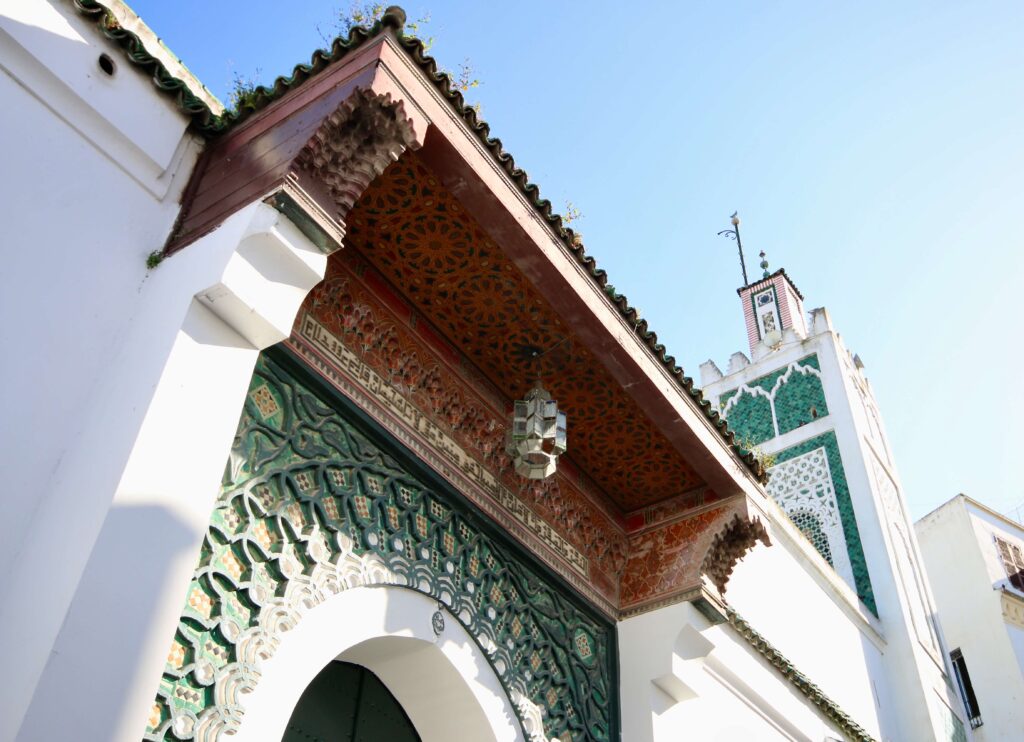
It enjoys enviable weather
While much of Morocco “cooks” during the summertime and freezes during the winter, Tangier remains pleasantly mild due to its coastal setting. In the warmest months, the temperatures rarely exceed 30°C (86°F). Meanwhile, nighttime lows in the winter hover around 9°C (48-50°F). It’s not exactly bone chilling!
Tangier is blessed with a good amount of sunshine throughout the year. This makes it an attractive destination if you’re seeking a temperate climate. There’s a reason so many artists and writers ended up here!
Rainfall is also relatively low. This allows for plenty of outdoor activities and exploration without needing to carry an umbrella with you.
It’s relatively easy to reach
Tangier lies just an hour’s ferry ride from continental Europe (Tarifa, Spain to be exact). This makes it one of the most accessible cities in Morocco. It’s also linked by ferry to several other European destinations, including Marseille, France and Genoa, Italy, although these routes take significantly longer.
If you’re already in Morocco, you can take the Al Boraq high-speed train from Rabat or Casablanca. The journey to Tangier takes just over an hour.
Last time I visited Tangier, I travelled aboard the Al Boraq from Rabat. It really was a great experience flying through the countryside at more than 300 km/h.
Tangier Ville railway station is also linked to Marrakech by overnight trains if you’re travelling south to north. This not only saves you a night’s accommodation expense but offers a unique Moroccan railway experience staying in a couchette cabin.
For those coming from Chefchaouen, CTM offers daily buses (around three hours’ duration). They travel to Tangier via Tetouan and offer incredible views of the Rif Mountains.
Tangier is also served by Ibn Batouta International Airport (TNG). It receives direct flights from major European cities like Barcelona, Madrid, Paris, Brussels and London.

FAQs: Is Tangier worth visiting?
Why is Tangier so special?
Tangier holds a special charm that stems from its unique history, beginning as a Phoenician settlement and trading hub in the 10th century BCE. Over the centuries, it has served as a crossroads for diverse cultures, each leaving its mark on the city’s identity.
It was developed as a Carthaginian port in the 5th century BCE and it served as a provincial capital under Roman rule.
In 1923, Tangier transformed into an international zone, governed by France, Spain and the United Kingdom. This period attracted a mix of European and American diplomats, spies, artists and writers. All were drawn to the city’s eclectic atmosphere and strategic significance.
The confluence of these varied backgrounds has shaped Tangier into a fascinating destination for 21st-century tourists to explore.
Is Tangier worth visiting?
In my opinion, Tangier is a destination that deserves a spot on your travel itinerary, particularly if you’re heading to Morocco’s north. It boasts a rich and diverse history, shaped by the influences of various cultures and civilisations. Plus, it has a storied past as a destination for globally renowned writers and artists.
In Tangier, you’ll find fascinating museums, incredible street art and wonderful cafes, not to mention some really memorable coastal views. There are souks for shopping and restaurants serving local specialties, as well as a laid-back atmosphere that’s ripe for people-watching in its leafy parks and squares.
How many days should I spend in Tangier?
Ideally, I would recommend spending two days in Tangier. This will give you ample time to explore the Kasbah district and medina, visit a few museums and go on a day trip to Cap Spartel.
With three days in Tangier, you could add in an excursion to Tetouan or Asilah. Both can be reached in around an hour from Tangier. Alternatively, you could venture all the way to Chefchaouen on a day trip. Although I would argue this deserves an overnight adventure.
If you don’t have two days available in your Morocco itinerary, it’s still possible to see a lot of Tangier in one day. This is particularly true if you confine your sightseeing to the Kasbah district and medina. Everything is within walking distance. But expect to get your steps in as there is a lot of going up and down.
With a one-day Tangier itinerary, you need to be more strategic with your sightseeing and prioritise the museums/destinations that appeal to you most.
Can you visit Tangier in one day?
Visiting Tangier in a single day is certainly possible, especially if you plan your itinerary wisely. I’d suggest staying within the Kasbah district and medina. This is where most of the city’s most iconic sites and museums are located. This area is easily walkable and you can cover a lot of ground, if you get an early start.
If you want to see Cap Spartel, you could head there for sunset – it’s around 30 minutes by taxi.
Can you do a day trip to Tangier from Spain?
Yes, it is definitely possible to take a day trip to Tangier from Spain and many travellers do just that. The most common route is from Tarifa, a coastal town in southern Spain. From here, you can catch a ferry that takes around an hour to reach Tangier.
Once you arrive at the port, it’s easy to get a taxi to the medina where most of Tangier’s cultural attractions are located. Be sure to visit the Kasbah, which is located at the northern tip of the medina and offers stunning views across the Strait of Gibraltar.
If you’re visiting Tangier on a day trip from Spain, be sure to check the ferry schedules in advance and book your tickets early as sailings are limited. Plus, prices tend to increase closer to departure dates. Also, bring your passport, as you will need it for the border crossing.
Is Tangier safe to visit?
Tangier is generally considered a safe and welcoming destination for travellers, with little violent crime recorded here. That being said, it’s wise to remain vigilant against pickpockets, a common concern in any bustling urban area. Also, ignore anyone who tells you that you’re “going in the wrong direction” and tries to lead you elsewhere.
Politely decline the offers of “guides” who approach you unsolicited and never be tempted to purchase drugs. It may be a scam that sees you end up in trouble with the local authorities. For more information about common scams in Morocco, check out my detailed article here.

PLAN YOUR TRIP WITH MY FAVOURITE RESOURCES:
Find hotels via Booking
Book tours and attractions via Viator or GetYourGuide
Find a rental car via Discover Cars
Book flights via Kiwi or Booking
Search for buses and trains via 12Go or Omio
Get travel insurance via SafetyWing
Buy a digital eSIM with Airalo
By purchasing through my links, you’ll be supporting my website at no additional cost to you
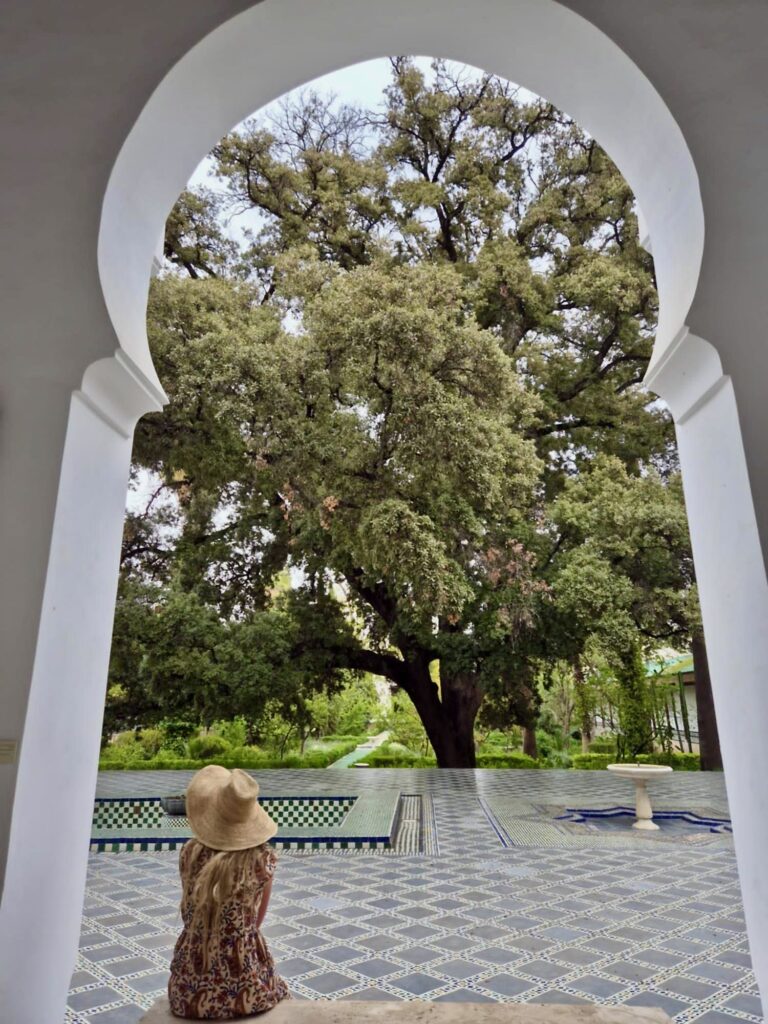
About Me
I’m Malika, a global traveller who first visited Morocco in 2014 before marrying a local and settling down in a little village on the Atlantic coast. Over the years, I’ve developed an intense love for Morocco, its incredible landscapes, storied cities and the exceptionally generous hospitality of its people.
Malika in Morocco is a place to share my years of experience exploring the country, from north to south and from the Atlantic Ocean to the Sahara Desert. As a resource for travellers visiting Morocco, I want to encourage others to experience this captivating destination the way they desire, whether that’s independently or under the expert guidance of local tour operators.
I believe strongly in supporting responsible and sustainable tourism initiatives while inspiring travel experiences that are life-impacting and mutually beneficial for both travellers and locals.
-
A Historic Andalusian Port: Essential Travel Guide to Tetouan
Looking for the best things to do in Tetouan or highly recommended places to stay? Discover the ideal time to visit, tips for getting around and the best Tetouan tours in this essential travel guide. Clustered along the slopes of the Martil Valley, Tetouan is a historically rich city on Morocco’s Mediterranean coastline. While not…
-
6 Best Tours in Tangier: Culture + Food + Adventure
Looking for the best tours in Tangier? Explore this curated collection of experiences, including cooking classes, guided walks and multi-day adventures to Chefchaouen and Fes. With its blue shuttered windows and whitewashed buildings cascading down to the sea, Tangier exudes a Mediterranean vibe unique for a Moroccan city. Overlooking the Strait of Gibraltar, it has…
-
13 Best Hotels in Tangier: Morocco’s Northern Gateway
Looking for the best hotels in Tangier? Explore this curated collection of highly rated stays, including luxury resorts and budget-friendly hostels. Perched on Morocco’s northernmost edge, Tangier is a cosmopolitan city that has welcomed travellers for centuries. It continues to enchant visitors today with its blend of African, Arab and European influences, not to mention…
-
10 Best Places to Stay in Asilah for All Travel Styles
Looking for the best hotels in Asilah? Browse this curated collection of family-friendly dars, beachside cottages and eco-friendly retreats to find the best places to stay in Asilah. Centred around a whitewashed medina, Asilah is an atmospheric coastal town and one of my favourite places to stay in northern Morocco. It’s brimming with incredible street…
-
11 Best Hotels in Tangier With a Pool for a Summer Stay
Planning a summer stay in Morocco’s northwest? Discover 11 of the best hotels in Tangier with a pool where you can cool off during the heat of the day. With its sun-drenched coastal setting where the Atlantic and Mediterranean meet, Tangier is a gateway destination and many travellers’ first impression of Morocco. It boasts a…
-
A Northern Gateway: Essential Travel Guide to Tangier
Looking for the best things to do in Tangier or highly recommended places to stay? Discover the ideal time to visit, tips for getting around and the best tours in this essential travel guide to Tangier. Just an hour’s ferry ride from Spain, Tangier has long been a hub where European and African cultures converge….
